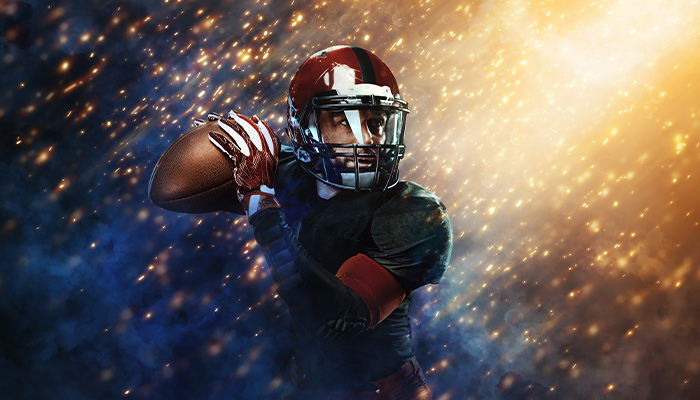NFL Teams Moving: Everything You Need to Know
 NFL Teams Moving
NFL Teams Moving
- Are NFL Teams Moving?
- There Are Advantages to Relocating…
- Why Do NFL Teams Relocate?
- Good Examples of Relocations
- Bad Examples of Relocations
- Frequently Asked Questions
NFL teams moving is a reality of the football world. However, loyalty is a big deal in the NFL – and when a team does change location, it can wreak havoc for the team and their fanbase. On this page, we’re going to look at three of the best – and three of the worst – relocations in NFL history.
NFL Teams Moving: Good Or Bad?
Whether NFL teams relocating is a good or a bad thing depends on several factors. Their performance is probably one of the most key elements – but the location that they move to also plays a major factor in whether the fans will back the move or not. NFL franchise moves are hard to pull off, but they can be done – as you’ll see from the rest of this post.
NFL Teams Relocation Isn’t Always Bad
NFL team relocation isn’t always bad; it can provide opportunities for personal growth and development. It can open up new doors for individuals and families by allowing them to experience new cultures, meet new people, and learn new skills.
It can also be a chance to leave behind difficult situations or negative influences. Additionally, relocating can provide a fresh start for businesses, allowing them to expand their reach and customer base. For sports teams, relocating can also be a way to improve their competitive position and build a stronger team.
Why Do NFL Teams Relocate?
Relocating an NFL team can bring a variety of benefits, both for the team and the city it moves to. For the team, a move can provide access to a new market with a larger fan base, leading to increased revenue through ticket sales, merchandise, and sponsorships.
The city that a team moves to can also benefit from an NFL team, as it can bring economic development through the construction of new facilities and the creation of jobs. Additionally, having a professional sports team can boost civic pride and can be a source of community unity. Lastly, relocation can help NFL teams with poor performances to start fresh and have a better chance of success. In the table below, you can view some of the more notable relocations that aren’t listed on this page.
| Old Team | New Team/Relocation |
|---|---|
| Oakland Raiders | Las Vegas (2020) |
| Houston Oilers | Nashville (1998) |
| Boston Redskins | Washington Commanders (2022) |
| Portsmouth Spartans | Detroit (1934) |
| Dallas Texans | Kansas City (1963) |
The GOOD Relocations
In terms of NFL teams that changed cities, there have been a few pretty successful relocations – and in this section, we’re going to be taking a look at three of the most successful relocations.
Dallas Cowboys to Kansas City Chiefs
Back in 1960, two NFL teams competed in Dallas; the Cowboys, and the AFL’s Texans. Unfortunately, the Texans had a lousy record, and they only won nine games in three years! Lamar Hunt didn’t feel there was enough of a market in the heart of Texas to justify two professional football teams – so he started looking for a new location for his AFL club.
As a result, the Texans turned into the Chiefs – and they later posted a 5-7-2 record during their first season in Missouri. To follow on from this, they managed an impressive 10-year streak of non-losing seasons!
Decatur Staleys to Chicago Bears
Decatur is located right in the heart of Illinois – and with a population of just 44,000 back in 1920, it was never seen as a place where a major NFL team would originate from! Interestingly, when the Staleys were playing, they had more wins than anyone else in the league – but then George Halas bought the team and decided to move it to Chicago, just two seasons after the team started playing in Decatur!
Potential NFL franchise moves are always risky – but Halas had ambition and decided to name the new team the Chicago Bears. They ended up winning eight NFL championships between 1921 and 1963, and also managed to appear in four other title games. Interestingly, the Bears are one of just two original franchises to have survived and those who like to wager on football still regularly bet on them – or against them, as the Bears aren’t a great team at the moment!
Cleveland Browns to Baltimore Ravens
When it comes to NFL teams that changed cities, the Cleveland Browns to the Baltimore Ravens is one of the more interesting cases – and you’ll see that we’ve included them in both the good and bad sections, here. Initially, it was a dreadful decision for Cleveland, who ended up going three seasons without an NFL franchise.
However, the team that rebranded to the Baltimore Ravens had success, as they ended up becoming Super Bowl champions in 2000, just four years after being established! Baltimore fans couldn’t believe their luck – and tickets were sold out four years in advance!
The BAD Relocations
Whether it’s potential NFL franchise move, or NFL teams moving for financial reasons, there are also some examples where it’s turned out to be disastrous for the teams involved. We’ll take a look at some of the bad examples of NFL teams relocating below.
Again, The Cleveland Browns!
Remember how we just mentioned how it was a positive move when the Cleveland Browns became the Baltimore Rovers? Well, in the last 20 seasons since the Browns were revived, they’ve only had two winning seasons . For example, between 1975 and 1994, they had a total of eight playoff appearances and five division titles – but since, they’ve had just one postseason game, and haven’t managed any AFC North crowns since that time.
They have also finished last 15 times in the division since then – while the Ravens ended up winning a Super Bowl just five years after leaving Cleveland! Browns fans will be envying their rivals over in Cincinnati, who have recently managed to develop a Super Bowl caliber side – many gamblers have started betting on NFL games online to back the Bengals.
The 49ers Move to Santa Clara
While this isn’t technically classified as being an official relocation, the San Francisco 49ers decided to leave their popular waterfront stadium at Candlestick Park as they wanted to move into a $1.3 billion stadium located in Santa Clara. Despite being just 40 miles away, the traffic issues have caused a lot of upset for fans. For example, even in mild traffic it can take up to an hour of extra driving time – and combine that with high gas prices and tiring commutes, it’s no surprise to see the number of attendees dropping at games.
When Levi’s stadium opened its doors in 2014, it was reported to have the highest average ticket prices in the league. While many understood the reasons why (it’s located in one of the most expensive areas in the world), it was problematic for lower-income fans. Even those who could afford the tickets had to sit in an hour or more of traffic to reach the game.
Another major problem with the move was that many fans complained the seats were incredibly uncomfortable. There was also a distinct lack of shade – leading many fans to get extremely sunburnt – and the condition of the field was also said to be “atrocious.”
Chargers Move To… Carson?
The San Diego Chargers are one of the most iconic teams in the NFL, and they have a sizable fan base overseas, too. However, there have been some remarkable problems in the last few years, although this year’s qualification for the playoffs will have cheered the fans.
They’re included in the list of bad relocations as they took temporary residence in a soccer stadium in Carson when they relocated to LA from San Diego – and this stadium is capable of seating just 27,000 fans, which wasn’t anywhere near enough seating for the number of Chargers fans looking to catch a game. Things have worked out for them now, as the Chargers share the SoFi Stadium with the Rams.




